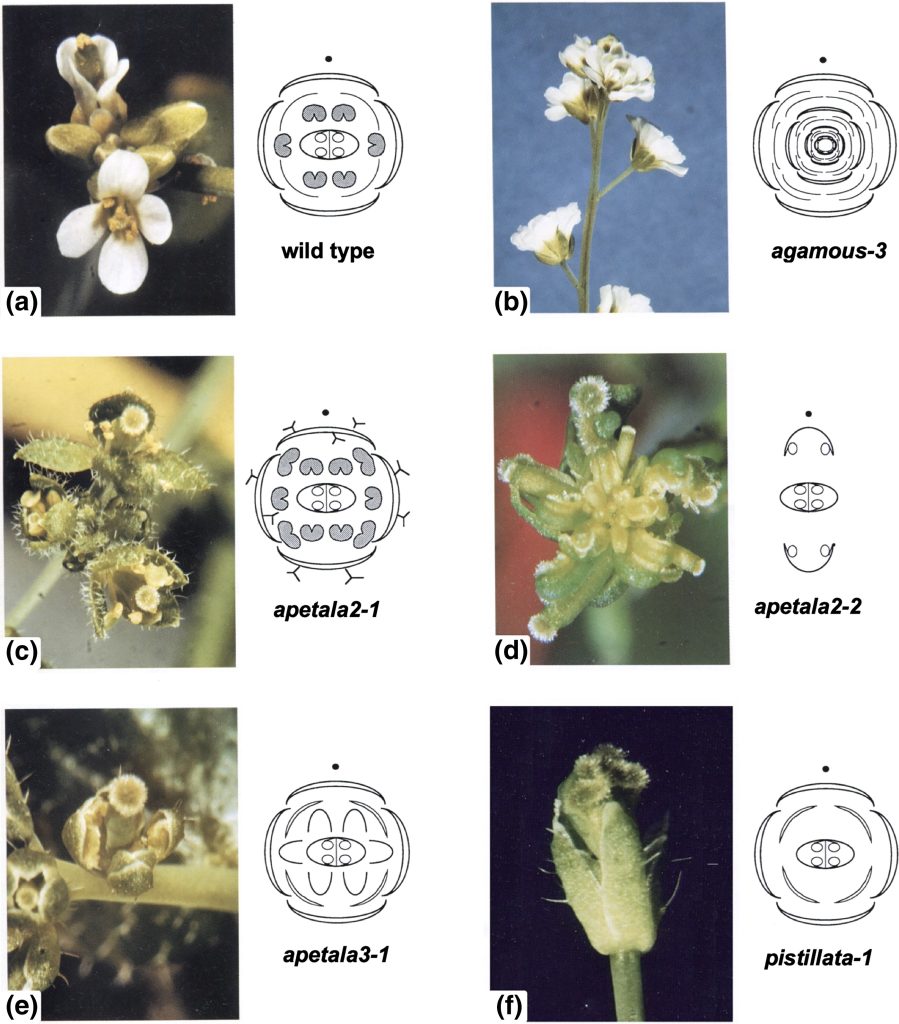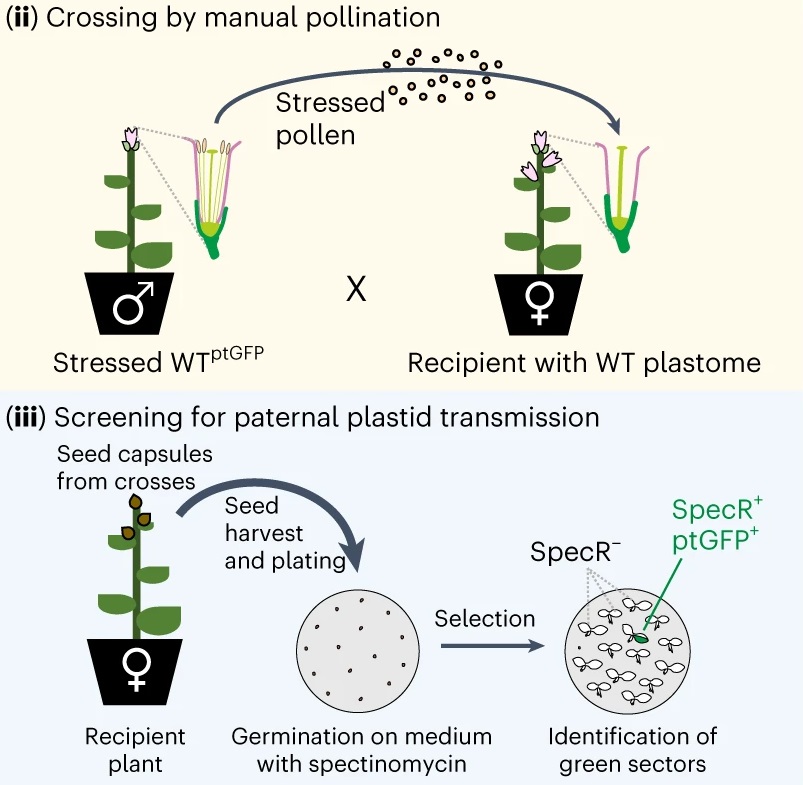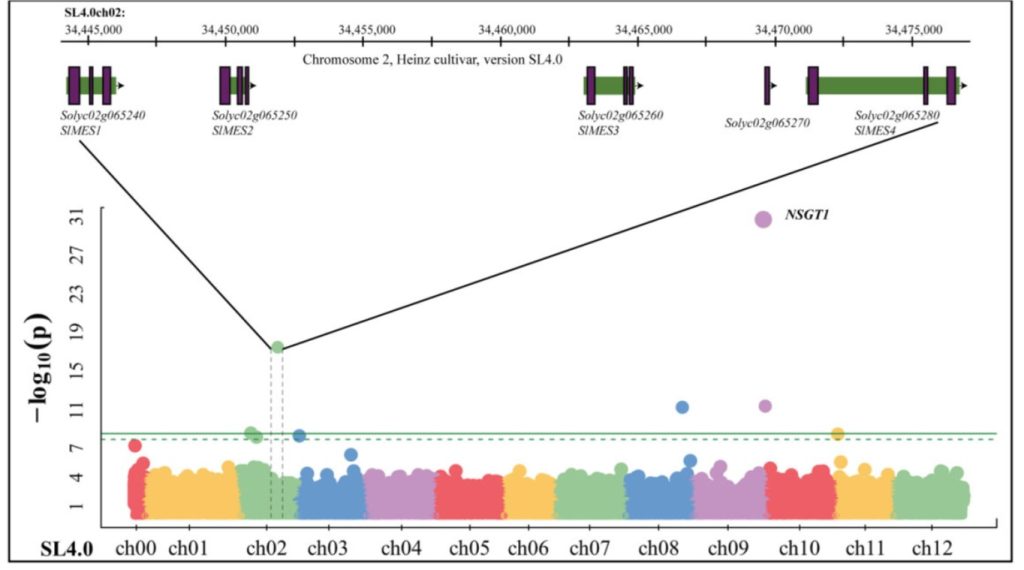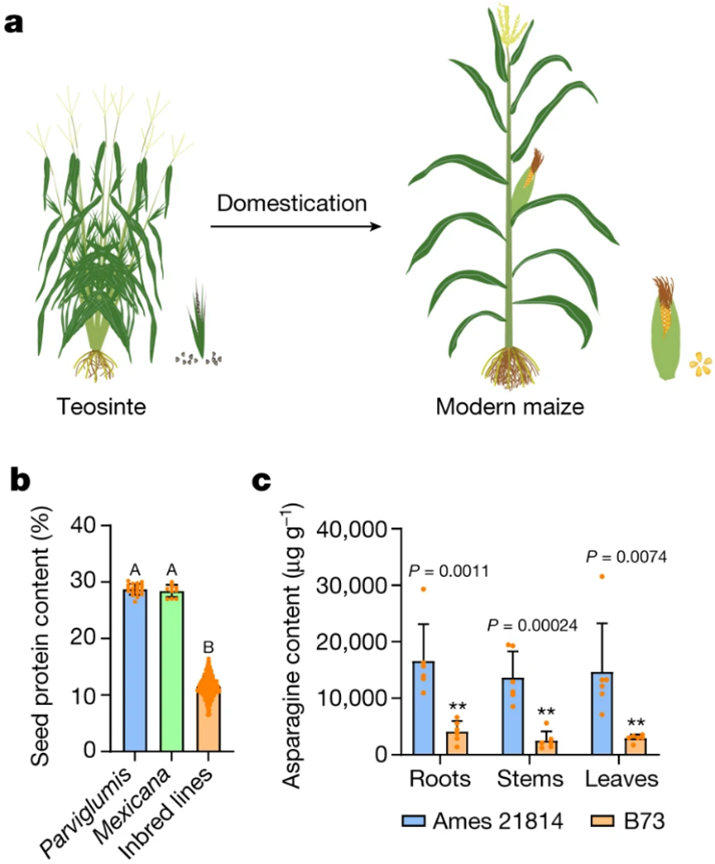
Perspective: How flower development genes were identified using forward genetic screens in Arabidopsis
Plant Science Research WeeklyIf you weren’t around in the '80s, you missed some great times; the music, the fashion, the flower genetics! This historical perspective article by David Smythe nicely sums up those heady days with an account of how Arabidopsis thaliana blasted into the ranks of a top model organism, in part through…

Improving harvest index under drought stress in rice
Plant Science Research WeeklyHarvest index (HI) is the ratio of grain yield to the sum of grain, leaf, and stem biomass. HI is affected by environmental conditions such as water availability. Previously, carbohydrate remobilization from stem to grain has been shown to be affected by drought (which in rice contributes to C remobilization)…

A paternal perspective on maternal inheritance
Plant Science Research WeeklyNuclear DNA is inherited from both parents during sexual reproduction, but organellar DNA is (usually) exclusively received from the mother. However, stable biparental inheritance of organellar DNA has also been reported in plants and animals but its molecular mechanism is unknown. Using quantitative…

Demethylation of methyl salicylate to salicylic acid in tomato fruit
Plant Science Research WeeklyThis is an interesting paper that grabbed my attention from the very first line: “Tomatoes are the second most valuable crop in the USA”. Of course, a key trait in these important fruits is their flavor, something the Harry Klee team at the University of Florida have been studying for years. Here,…

A teosinte gene enhances seed protein content in maize
Plant Science Research WeeklyIncreasing nitrogen-use efficiency (NUE) and seed protein content are important for maize breeding. Modern maize hybrids have 6.5-16.5% seed protein content, while the wild ancestor of maize, called teosinte, has ~30% seed protein content. In addition, teosinte (accession Ames 21814) contains notably…

Productivity and agronomic potential of perennial rice
Plant Science Research WeeklyModern rice is descended from a perennial grass, which through millennia of selection evolved into an annual “one-sow, one-harvest” crop. However, it has become apparent that perennial grains have the potential to decrease soil erosion and competition, as well as lower the labor required to produce…

Drought resistance or yield? In search of gold, we lost the diamond (Mol. Plant)
Plant Science Research WeeklyArtificial selection has significantly increased crop yield. However, this has come at the cost of compromising abiotic stress tolerance. Stomatal aperture has an important role in abiotic stress tolerance. Abiotic stress induces stomatal closure and involves the intracellular production of reactive…

Hybrid-derived weedy rice maintains adaptive combinations of alleles associated with seed dormancy (Mol. Ecol.)
Plant Science Research WeeklyThe cross between genetically distant parents is an essential source of genetic variation. This process, known as hybridization, might result in the loss of adaptive gene combinations due to the introduction of non-adaptive alleles. However, Imaizumi and colleagues show this is not the case with weedy…

Teff breeding potentials from data-driven, participatory characterization of farmer varieties (eLIFE)
Plant Science Research WeeklyThere is a clear need to synergize advances from cutting-edge genomic approaches with the needs and knowledge of growers, particularly small-holder growers who have access to much of a crop’s genetic diversity. Here, Woldeyohannes, Iohannes et al. took a transdisciplinary approach to explore the breeding…

